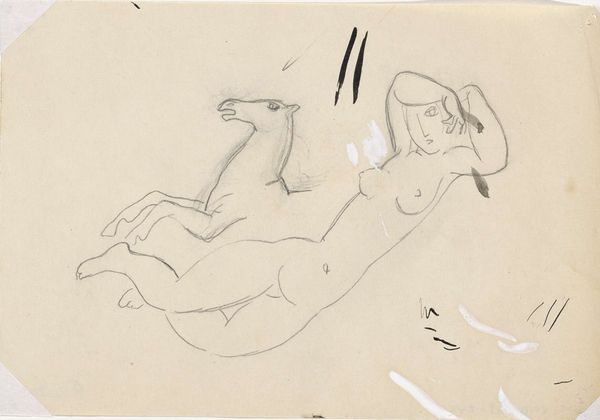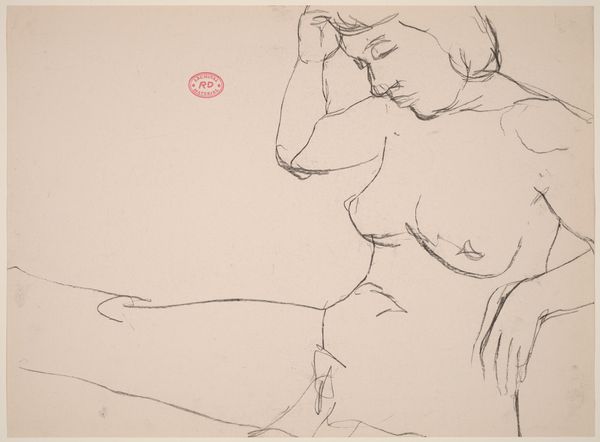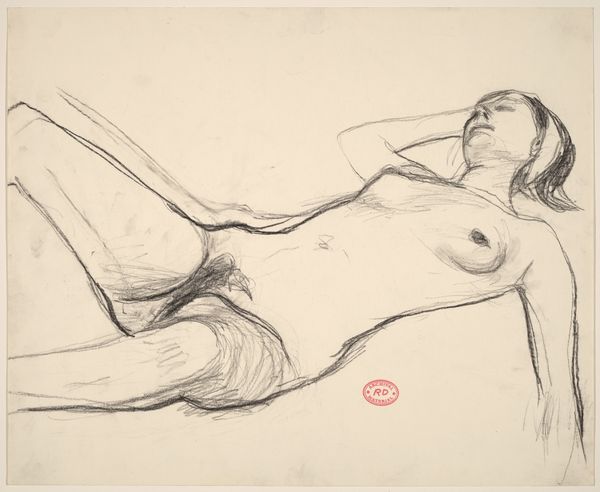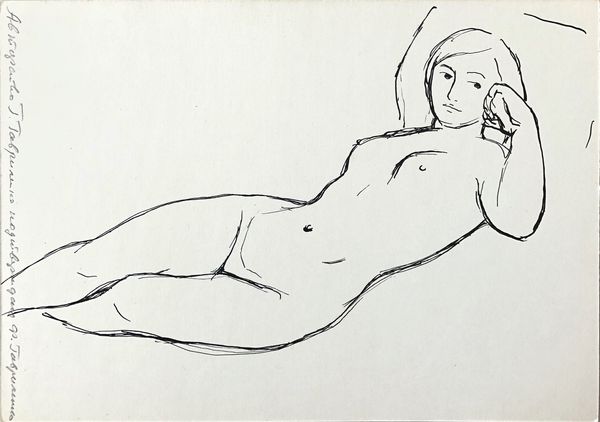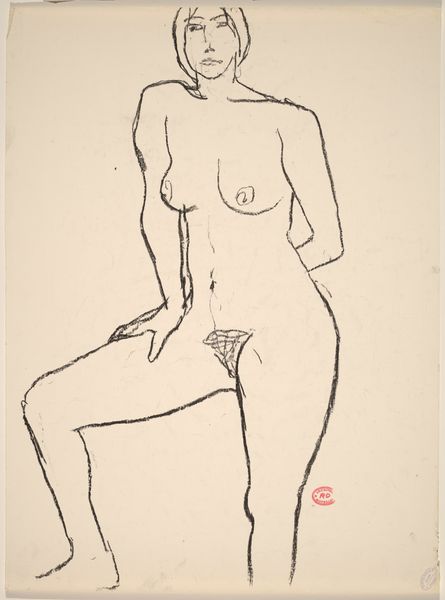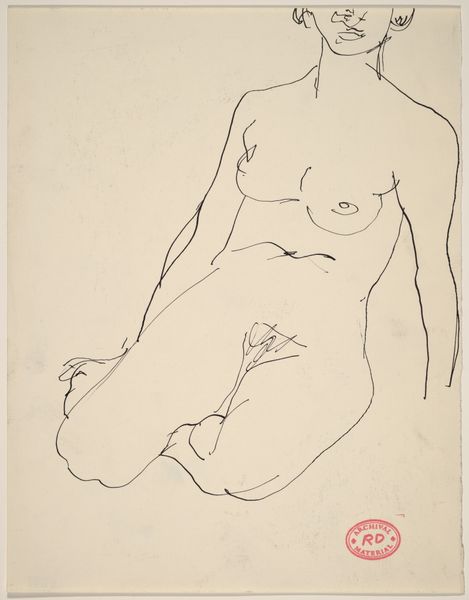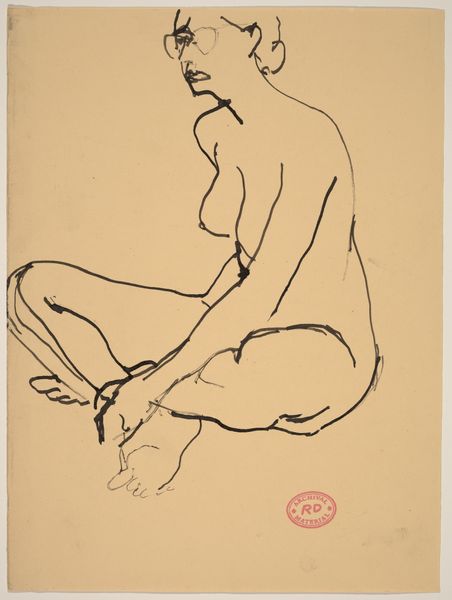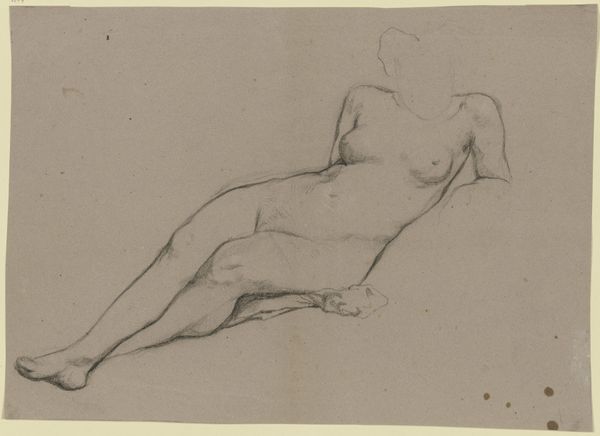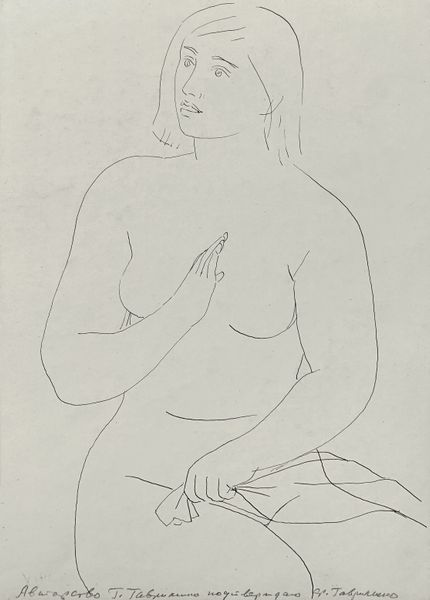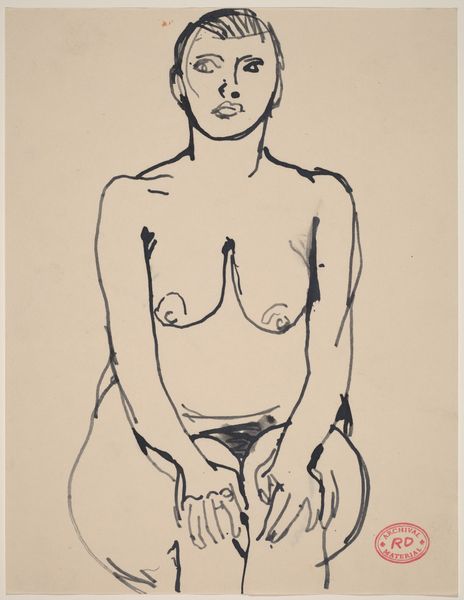
drawing
#
drawing
#
self-portrait
#
vienna-secession
#
caricature
#
figuration
#
form
#
female-nude
#
line
#
nude
#
modernism
#
erotic-art
Dimensions: 21 x 28.5 cm
Copyright: Public domain
Curator: Here we have Koloman Moser's "A Crouching Woman," a drawing created in 1914. What are your initial thoughts on this nude? Editor: I find her posture unsettling, almost like she's been forced into submission, although the upward tilt of her face complicates that reading. Curator: It's interesting you say that, because figures like these were common at the time in fin de siècle Vienna, reflecting an intense exploration of human psychology. Notice how Moser simplifies form to almost symbolic rendering, like he's peeling back layers to get to the essential essence of "woman." Editor: The pose itself strikes me as rather contrived. It's hard to separate the objectification that permeates representations of the female nude during that period. What message are we reading when an artist shows such a pose? Is the viewer positioned as voyeur? Curator: Possibly, but the style offers a counterpoint. Look at the lines – quick, raw, like he’s searching, unsure. Rather than a perfected form, it captures the act of seeing. There is beauty but an immediacy of line as well that invites us to consider this more abstractly. Editor: And yet that ambiguity might reinforce the problematic aspects. The figure lacks any concrete context; she exists solely as an object of observation. Without some acknowledgement of identity or lived experience, the gesture seems like a missed opportunity to engage in a dialogue around autonomy or representation. Curator: However, do the times perhaps explain that avoidance of 'identity,' allowing us to see just a representation of humanity. A symbolic and historical essence is represented here with this nude form. Editor: But we can't remove these images from the canon in which women are objects, or do that history a disservice. It raises questions around representation that we continue to grapple with today. That said, the artist should also be seen through his period and perspective. Curator: Indeed, art from this era reflected turmoil, a transition away from strict historicism towards more emotional explorations of existence. Editor: Agreed. Curator: Thank you, your critical voice provides further perspective. Editor: Always, and it goes the other way around, the conversation around symbols opens more interpretations that I did not previously notice!
Comments
No comments
Be the first to comment and join the conversation on the ultimate creative platform.

